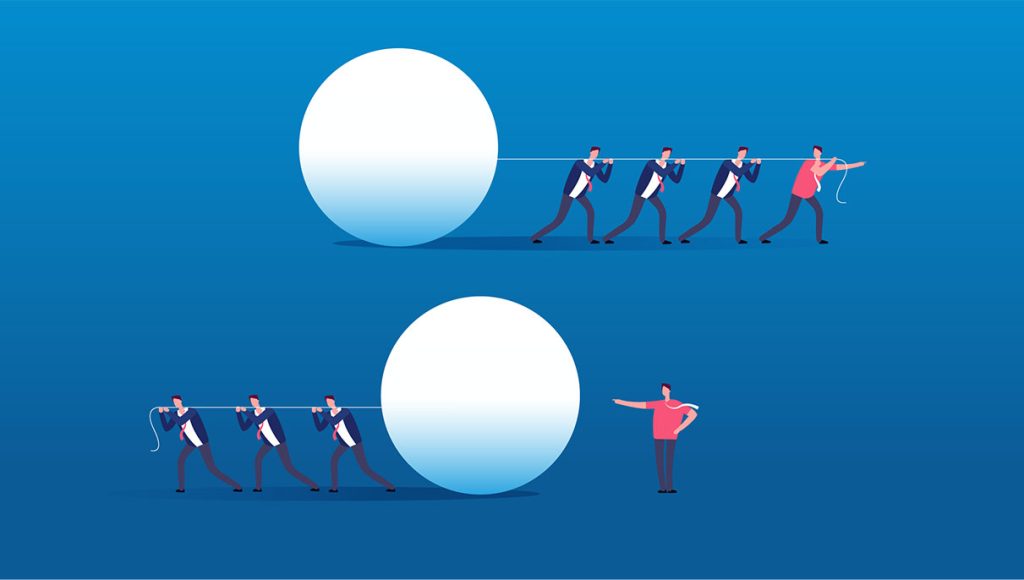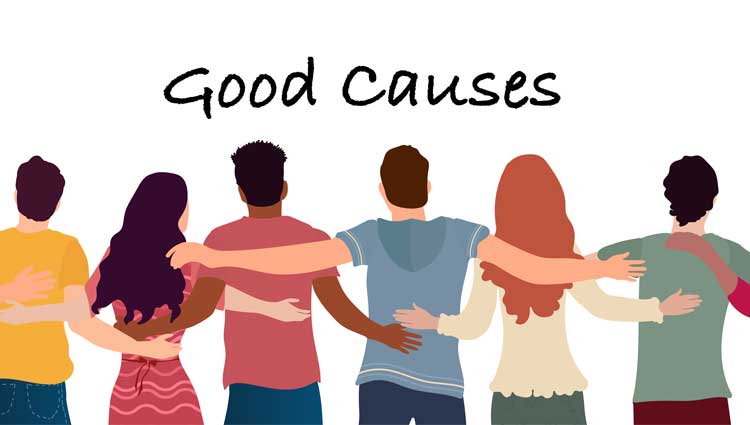Steer the Boat or Chart the Course?

Managers care about titles. Leaders care about people. If you dare to be a leader, this is a must-read article by Wayne Olson.
Average Gift Amount: A Fundraising Key Performance Indicator

A few essential pieces of data help fuel a powerful development department. These metrics, often called Key Performance Indicators, or KPIs, help fundraisers gauge the health of their activities. Another essential KPI for fundraisers is the Average Gift Amount.
Choosing an Executor or Trustee

You’ve finally decided to create an estate plan instead of taking the path of Abraham Lincoln, Bob Marley and Aretha Franklin. Congratulations! But how do you choose an executor or trustee? We have a few tips that will help.
5 Steps to Make Charitable Giving Part of Your Estate Plan

There are good causes with plenty of people and projects in need of support as they strive to make the world a better place. You might like to consider supporting them as part of your estate plan, making a charitable donation with the wealth you leave behind. This can be a wonderful way to give something back to the world, leave a positive impression, and support a cause that matters or means something to you personally. It also feels great, which is why so many people opt to add a charitable donation to their estate plan. But how does it all work? And what’s the best way to go about it? Here’s a five-step guide to learn all about charitable giving in estate planning.
Take the Cranky Calls

We all know them. The phone rings and the caller ID shows this is a call from someone who we know will be trouble. He or she is calling to complain, and it will not be pleasant. Around the room, people suddenly get busy so they will not have to take the dreaded call. Accelerate your career by taking the call!
Shrinking Congregations, Smaller Donations

American churches may be facing a fundraising reckoning. The word “recession” is on everyone’s mind. The stock market looks like a roller coaster. Fewer people are in the pews, and fewer dollars are in the collection basket. An entire generation of older, more generous parishioners is passing. And so far, “The Great Wealth Transfer” has yet to fill anyone’s collection plates to the brim (although that will change). Download Latest Stats on Church Giving (PowerPoint Show) Add to those challenges the historical fundraising problems that churches face: a reluctance to discuss money; a disconnect between the clergy, leadership, and laypeople; and an unfamiliarity with planned giving programs and how they work. It all adds up to a looming threat. We are the most religious nation in the West. We’re among the wealthiest nations in the world. Yet our houses of worship consistently rank near the bottom of U.S. charities when it comes to soliciting and closing major and planned gifts. So what’s a church to do? Let’s take a deeper look at common church fundraising problems—and find some solutions. Shrinking Congregations, Smaller Donations Ignoring the Warnings Since the pandemic, “one in five U.S. adults say they now attend religious services in person less often than they did before the pandemic.” (Pew Research Center) In 2020, 47% of Americans said they belonged to a house of worship, down from 50% in 2018 and 70% in 1999. (Gallup poll) 37% of regular church attendees and Evangelicals don’t give money to church. (Nonprofit Source) 17% of American families have reduced the amount they give to their local church. (Nonprofit Source) 7% of churchgoers have dropped regular giving by 20% or more. (Nonprofit Source) Only 5% tithe (give 10 percent of one’s earnings), and 80% of Americans give only 2% of their income. (Nonprofit Source) Christians are giving at 2.5% of their income; during the Great Depression it was 3.3%. (Nonprofit Source) These are big problems if the collection plate is the main source of your church’s fundraising. John Dickerson, author of “The Great Evangelical Recession: 6 Factors That Will Crash the American Church…and How to Prepare,” writes that churches stand “on the precipice.” “The problem with the Great Recession wasn’t that nobody saw it coming,” his book states. “The problem was that the people who needed to listen, to put on the brakes, to adjust course, never got the message. Or else they ignored it. The American church stands today in a similar position … The church’s overall numbers are shrinking. Its primary fuel – donations – is drying up and disappearing. And its political fervor is dividing the movement from within.” We’re experiencing that same church fundraising problem today: Leaders who think God will just miraculously provide are still avoiding planned and major giving programs, forgetting the proverb, “God helps those who help themselves.” The Future is Not Bright About 58% of church donations come from people 65 and over. What happens when those parishioners pass away? Who’s going to pass the collection plate, much less leave something in it? And what happens as more services are held virtually? Churches need to look beyond the plate and explore alternate forms of fundraising. They also need to educate donors about legacy gifts. Where There’s No Will, There’s No Way Over 68 percent of Americans lack even a simple will. And that’s not counting those who haven’t updated their wills to account for life changes. Less than 30 percent of Catholics and self-identified evangelical Christians have a will. If the folks in your pews don’t have wills, how can you expect to get planned gifts? That’s why estate planning education is so important to your church fundraising program. Planned Giving’s Role in Biblical Stewardship Planned Giving? What’s That? Most of the nation’s pastors (and boards, clergy, committees, and even congregants) are unfamiliar with planned giving programs and how they work. That unfamiliarity leads to resistance. They have no idea how simple it is to give (and receive) a bequest; have never heard of a Donor Advised Fund; and have no idea they can accept a gift of life insurance or a retirement plan that could fund their mission for generations to come. Yet churches have a major advantage over other nonprofits. They literally have a captive audience for their appeals and a prospect base for major and planned gifts that would be the envy of many other nonprofits: a mature, geographically concentrated group of people who know and identify with each other, and consider the church to be an integral part of their identities! Church leaders must use this opportunity to connect with their congregation, explain planned giving, and ask for legacy gifts. Legacy Gifts Increase Regular Gifts There’s a very common misconception among fundraisers, board members, and nonprofits in general: That promoting planned gifts takes money away from annual giving. Yet nothing could be farther from the truth — in fact, it’s just the opposite! If you’re facing resistance, show those Doubting Thomases numbers from experts like Russell James. His study of philanthropic giving (June 2020 UC Davis Law Review) found that including a charitable gift in a will generates a 77 percent increase in annual gifts from the same donors! Our statistics on wills and estate planning will shed more light. Cash Gifts vs. Asset Gifts According to the Center on Wealth & Philanthropy, the average retired household owns 58% more wealth in assets (stocks, bonds, real estate, etc.), but earns 35% less income than non-retired households. But retirees contribute about 69 percent more to charitable causes than non-retired households! Nationally, only about 10% of the country’s wealth is held in cash Why focus fundraising efforts on cash, when 90% of the wealth is in assets such as stocks, bonds, insurance policies, and real estate? This is why planned and major gifts programs are so important! The Great Wealth Transfer We’re on the cusp of the Great Wealth Transfer. Over the next two decades, it’s estimated that Baby Boomers will leave their children more
Don’t Raise Money. Sell a Dream.

There’s something that some fundraisers don’t get that good marketers know instinctively: You’re not selling a product, gift plan, or naming rights. To paraphrase Steve Jobs, “You’re selling a dream.” It doesn’t matter if you’re buying a Ferrari or Ford, a Rolex or a Timex, diamond earrings or cubic zirconia, a villa on a lake or a weekend at an Airbnb: You’re buying a dream of something bigger, better, shinier, or easier. The same goes for donors. Your donors are buying a painting visualized in their minds. They’re not “buying” your mission. They’re buying a dream of lasting legacies; philanthropic hopes; and transformative outcomes. Objects are a commodity. Whether it’s a Ferrari Testarossa or a Ford Focus, it’s just a car. But a dream is something different. It’s a very personal thing, and you — the fundraiser or “salesperson” — cannot put a price tag on it. That’s for the dreamer to do. Selling the Sizzle This concept of selling a dream fits neatly with our mantra of, “Sell the sizzle, not the steak.” Think about it: If you’re craving a steak, you’re not dreaming about the method in which the cow was raised. “Mmmm. Grass-fed, all organic, free-range, ethically raised beef.” You’re dreaming about the taste, and your expectations for the experience. “Mmmm. Sixteen ounces of still-sizzling, flame-grilled tender beef served au jus with a loaded baked potato on the side.” Likewise, donors don’t dream about the mechanics of how a charitable gift annuity or donor-advised fund works. “I’ve always wanted to make a gift of cash that is set aside in a reserve account and invested for the betterment of a nonprofit!” Instead, they dream about all the good they can do by making a gift. “I’ve always wanted to help orphaned children find loving homes!” Big difference, no? Donor-Centric Isn’t Just a Catchphrase “Selling the dream” is why we use donor-centric language. It takes the focus off the product (your nonprofit and its mission) and puts it on the donor instead. It’s also why we avoid using death language in our donor communications and gift descriptions. After all, saying “Mr. Jones, we’re looking forward to your death so we can use your money for our mission!” isn’t likely to inspire a gift — or put you in anyone’s good graces. But too many think a donor-centric approach simply means inserting variations of the word “you” as often as possible in donor communications. They think “selling” planned gifts requires extensive knowledge of tax laws and gift details. And they believe a one-size-fits-all approach is the best way to reach their audience and capture donor interest. Since you’re likely one of our clients already, I don’t have to tell you they’re wrong. You know that donor-centric messaging requires you to consider your donors’ interests, motivations, and yes, dreams. You understand that it requires building a culture of philanthropy and focusing on stewardship. You realize it requires being a good listener, so you can learn what’s important to your prospects. And you recognize that it means helping your prospects clearly see their vision, their dream, so that you can help them to bring it to life. Conclusion Smart fundraisers know that raising money isn’t about selling donors on a particular gift vehicle, or even on a mission. It’s about selling them their dreams, and finding a way to facilitate those dreams in a manner that benefits both the donor and the nonprofit. It takes good stewardship, active listening, and a focus on donor-centric fundraising. Stop trying to sell your nonprofit’s mission. Sell your prospects their dreams of philanthropy instead. In fact, maybe it’s time to stop calling yourself a fundraiser, or even a friendraiser, and start calling yourself a dreamraiser instead.
How to Soften the Death Undertones of Planned Giving Marketing

Planned giving can present a unique challenge for marketing, because the unspoken message is that a death must occur for a gift to be fully realized. Here are two ways to alleviate the macabre undertone.
Major Ask Calculator

This will sound familiar. A fundraiser has a good relationship with a donor and wants to prepare to make a major gift ask. Extensive research has been collected about the donor. It includes a philanthropic capacity estimate from services like iwave and DonorSearch, and whatever else could be found online. Notes from conversations, street research from people who know the donor, and the donor’s giving history to her organization are also gathered. Despite all of the research, the fundraiser has an uneasy feeling that whatever ask amount is settled upon, it will, at best, be a guess.
Seven Easy Ways to Become a Better Facilitator

We have all unfortunately been there. A meeting that could have been an email. A lengthy meeting that left all attendees confused about what was accomplished. A brainstorming session where personalities derailed the discussion. What these situations all needed is an effective facilitator. Learn how to run respectful and productive gatherings with these basic facilitation tips.